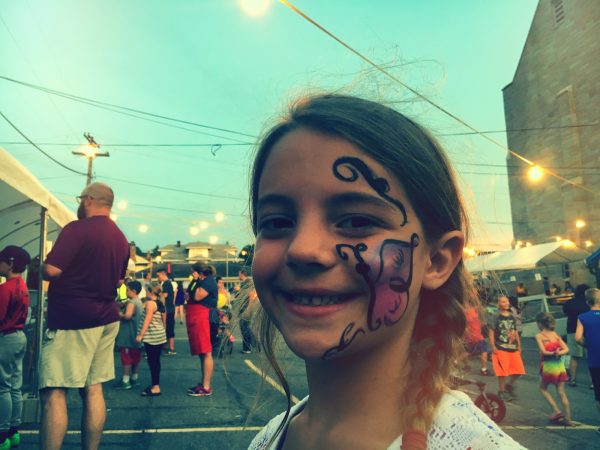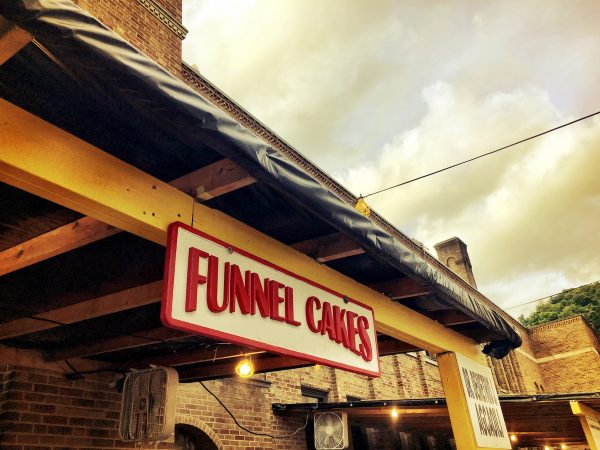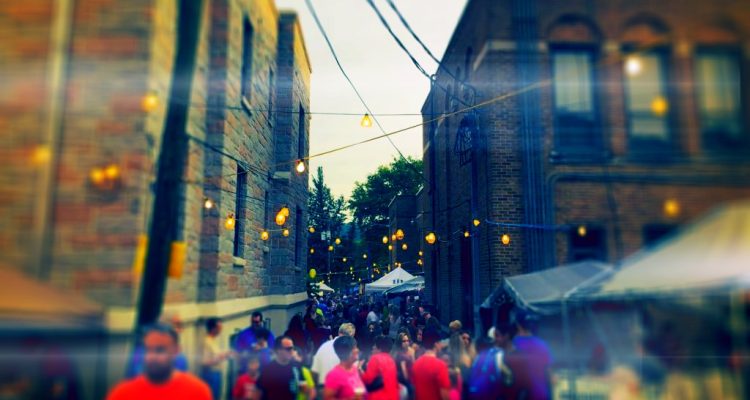By Christina Greer
The headlines are depressing.
“The most miserable state in the US is West Virginia. For the fifth year in a row!” (The 2014 Gallup-Healthways Well-Being Index)
“West Virginia is the unhappiest state in the nation.” (2017 Wallethub Survey)
“West Virginia is the most depressing state in the country.” (2017 MSN.com)
“West Virginia ranks 45th in the nation for quality education.” (2016 Economic Policy Institute Report)
Yet here I am sitting on my deck on a cool June morning surrounded by spring-green rolling hills, and I have never been happier.
The facts are facts to be sure. West Virginia has a high poverty rate. West Virginia’s population is continuing its rapid decline. West Virginia has few job opportunities. And there’s no question that the 35th state in the nation has been battered by poor legislative and business decisions.
But from where I am writing just minutes after sunrise, I struggle to reconcile THAT West Virginia with the place where I live out each day.
I grew up in 1970s and 80s Moundsville, home of the largest conical Native American burial ground east of the Mississippi River and the now-retired West Virginia State Penitentiary. My early years were formed by stories of the northern panhandle of my grandmother’s era: the oil and gas boom (yes, we have seen this before) when trains ran night and day throughout the Ohio Valley, the age of chemical plants and coal mines working at top speed, and the decades when the streets of Wheeling were crowded with Saturday shoppers and mill workers on their lunch breaks.
On Sunday afternoons my dad would load the whole family, including my grandmother, into whatever miles-long sedan he was driving at the time, and we would motor around the Valley. Sometimes we would hit the backroads and stop at roadside berry bushes or peach trees and pick the ripe fruit to take home for cobbler. Other times we would cruise through the streets of South Wheeling and ogle at the storefront windows decorated for Christmas. My favorite trips, though, involved National Road. I loved the bends and plateaus of the historic highway and stopping in the little towns that once boomed before I-70 took their thunder.
By far, though, I looked most forward to our Sunday drives on Route 40 that took us past the most beautiful houses I had ever seen. I remember scrunching down in the backseat so I could look longingly out the window at what to little-girl me seemed to be mansions that went on for miles and miles. Perfectly manicured lawns completed the view of homes I had seen only in magazines. Sometimes when we were stopped at a red light, I could see inside and would watch as the occupants moved around in their well-appointed kitchens. I made up stories for them that I later believed must be true. The family in the stone house pays for their kids to play in the band and in basketball, too. Two luxuries my family could never afford. The dad in the house with brown siding taught his daughter to ride a bike on the side walk out front. We didn’t have sidewalks in our trailer park, and my neighbor taught me to ride my bike by giving me a big push down the gravel lane. Clearly, I believed that the people who lived on National Road must have it all, or at least everything I didn’t.
Years went by. My grandmother moved into a nursing home, my brother got married, and I went on to college. Our Sunday drives became memories, and I forgot about the particulars, including those historic homes that stood handsomely on both sides of Route 40.
I left West Virginia in 1996 to pursue a doctorate. The day I gave up my West Virginia citizenship to be eligible for in-state tuition was a sad one. I cried. I am a West Virginian through and through. My family came to this state from nearby Pennsylvania in the early 1800s. Their blood and sweat is in the soil, the very stuff our state is made of.
In the years I was away, I would see West Virginia in everything. I learned to defend my state and its people from cruel jokes and stereotypes. I longed to return home, but I could not figure out how to do it and pay the bills. After being gone for twelve years, I found the country roads back to the Ohio Valley by taking a job in Pennsylvania.
I knew I wanted to live in Wheeling. It had everything I needed: shopping, coffee, books, and family. My then-fiancé and I set out to buy a house. We looked in every neighborhood in the city. And then, one afternoon more than 25 years after my family’s Sunday drives, I went to look at a house number 56. As we drove through Elm Grove towards Woodsdale, I scrunched down in my seat to look up at the street signs. Just then, I realized that THIS was the neighborhood from my childhood. THOSE were the homes I had admired from the backseat of my dad’s Royal Monaco. (Houses I came to realize were not all mansions but well-kept pieces of Wheeling history.) I found the right side street and turned up searching for the address. Three blocks in, I pulled over to tour the house that would become my home.
When asked why I choose to live in Wheeling, the answers come tumbling out like Blackwater Falls after a spring thaw:
Natural beauty.
No lines.
No traffic.
Rich culture.
Thriving arts community.
Good friends.
Room to grow.
Great schools.
Majestic parks.
Spectacular history.
Mostly, though, I love living in Wheeling because no city its size does summer (and fall) quite like Wheeling. As an older mom of a now-six year old boy (already?!), I am grateful at all the fun activities held in Wheeling throughout the warmer months that keep our family entertained, educated, and active.
Summer starts for us with Memorial Day weekend at Oglebay Park and Heritage Port. Free music, a solemn observance of the holiday, and fireworks. From there, we enjoy so many free (and inexpensive) events throughout the city and the Ohio Valley that we often have to choose between several different options on the same day.
We love to kick up our heels at all of the free outdoor concerts in the area. If we wanted to, my family could listen to live music nearly every day of the week all summer long. From Toe Tappin’ Tuesdays in Warwood to Waterfront Wednesdays at Heritage Port to the Summer Concert Series on Sundays at Oglebay, we are blessed with a variety of incredible performances that require noting more than a little gasoline and a blanket. (Your mileage may vary.) And this is only a partial list!
Of course, our favorite night of outdoor music the whole year is when the Wheeling Symphony Orchestra plays a free concert on the Fourth of July at Heritage Port. We haven’t missed a Fourth of July since he came along, and I hope we never do. It is hard to decide which fireworks venue is better—Oglebay Park or Heritage Port—but fireworks in view of the Suspension Bridge is worth the after-show traffic. (Yes, I too miss when fireworks dripped off the Suspension Bridge like molten lava, but we have to keep her in good shape for generations to come.)
Free movie nights pop around the Valley throughout the summer, too, including at Heritage Port and Wheeling Park. My son and I just went to a “Dive-In” Saturday night at Wheeling Park pool. For three hours we floated in some of the warmest pool water we have ever had the pleasure to dip our toes in. Despite the chilly temperatures that night (64 when we left at 10:55 pm), the dressing rooms were heated and our towels were cozy. We loved bobbing around in the water while watching Willy Wonka and the Chocolate Factory.
Speaking of pools, we slip into our suits at least three times a week every summer. We have access to a seemingly endless number of swimming sites in our Valley, including Oglebay and Wheeling Park that both added fun new features this summer. (I have yet to make it to the top of the climbing wall, but I will by the end of summer. I will!) Pools are located all over the city and elsewhere in the Valley, including Glen Dale and Grand Vue in Marshall County.
But when we want to explore new feasts for our imaginations, the whole family heads down to Heritage Port for a seemingly endless number of festivals that attract local and international talent. If we attended all of the events at Heritage Port, we would rarely see our own front door. Each year we can explore the Wheeling Feeling Chili Cook-Off, the Ohio Valley BBQ Rib and Chicken Cook-Off, the Wheeling Arts and Culture Fest, the Italian Festival, the Festival of India, the Dragon Boat Race, and any number of exciting and fun family events held all summer long.

Sometimes, though, we prefer the more intimate crowds at our community festivals. Our favorite neighborhood festival is held every second weekend in July at St. Michael Parish in Edgwood. My son and I play carnival games (he has a fine collection of beer mugs from dime toss), ride the old-time pony-go-round, listen to live music, and enjoy fair food. We also look forward to the Grecian Festival at St. John the Divine. The best dolmas and spanakopita around! Of course, no summer festival line up would be complete without a trip to the Mahrajan Festival held at Oglebay Park every summer. Our favorite part is the dancing. Our Lady of Lebanon Church puts on the festival and makes sure to add a firm platform so we can hear heels clicking along with the rhythm of the castanets. (This list does not include the Celtic Festival held in March or the many other ethnic and culture festivals held throughout the region all year.)

Oglebay Park, of course, is the crown jewel of Wheeling. I have joked with Oglebay staff many times that we spend so many days a year playing in the park that I am afraid they are going to send me a bill for rent, and I mean it. In addition to live music, swimming, kayaking, mini-golf, aerial climbing, nature workshops, and so much more, we head to Oglebay every year for our three most favorite Wheeling events: Ft. Henry Days (and the Woodcarver’s Festival) during Labor Day Weekend, OglebayFest in early October, and Boo at the Zoo at Halloween. Our year would not be complete without these traditions.
Sometimes we want to kick back and relax. When we do, my son and I visit the storytellers at Oglebay and Grand Vue Park, head down to the Ohio County Public Library (which has an impressive lineup of its own throughout the year), and to the Veteran’s Memorial Amphitheater for Story Time.
When the weather is too hot, we visit any number of our local museums and educational sites. Our favorite is Independence Hall. (“It’s where West Virginia was born!” my son says proudly when we walk in the door.) Some sweltering afternoons we can be found at the SMART Centre Market learning about dinosaurs and eating ice cream, playing in Lydia’s Closet at the Ohio Valley Children’s Museum on 10th and Main, or exploring the Oglebay Mansion Museum.
I am sure this article must seem like one big sales pitch for Wheeling, and it is! We love living in Wheeling. It is not the perfect city, but neither is our family. Sure, around the end of February when I cannot feel my toes and the sky is unrelentingly grey I start dreaming of buying a condo in Florida, but for the majority of the year, Wheeling is right where I want to be. On days that we want a change of pace, we drive an hour to take advantage of the many attractions in Pittsburgh, or as a friend jokingly called it a few weeks ago, Big Wheeling.
Will Wheeling ever be what it once was? No. Can any person, place, or thing ever stay the same? But what we have here right now—in this moment—is more than most people can expect from a city the size of Wheeling in a state as economically challenged as West Virginia.
While I lived away from the Ohio Valley, I became so passionate about the region that became a scholar of Appalachian culture. (West Virginia is the only state in which all of our counties are included in Appalachia.) Understanding the broader picture of who we are as West Virginians within the context of Appalachia and the nation gave me a new perspective and even more respect for the state that has tried so hard and continues to go on.
We overcame all odds and arguments to break away from Virginia and achieve statehood.
We have survived the collapse of the coal industry.
We have rebuilt after floods and droughts and calamities that might buckle a weaker state.
And somehow, in some way, we will go on.
In John Steinbeck’s Depression-era novel, The Grapes of Wrath, Ma Joad gives voice to the staying power of the downtrodden:
“We’re the people that live. They can’t wipe us out. They can’t lick us. And we’ll go on forever, Pa… ’cause… we’re the people.’”
West Virginians…we’re the people. Fellow Wheelingites…we’re the people. And every day I am proud to be one of ‘em.




